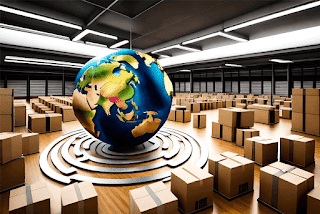Navigating International Customs Clearance: Tips for a Smooth Process.
International customs clearance is a critical aspect of global trade, ensuring the smooth flow of goods across borders. However, it can be a complex and often challenging process due to varying regulations and requirements in different countries. In this article, we will explore the common challenges in international customs clearance and provide valuable tips on how to avoid delays and errors.
Understanding Tariff Classification. One of the primary challenges in customs clearance is correctly classifying goods for tariff purposes. Each product has a specific tariff classification code, and the accuracy of this code is crucial for determining the applicable duties and taxes. To address this challenge:
- Consult Harmonized System Codes: Familiarize yourself with the Harmonized System (HS) codes, which are used globally to classify products. It's essential to assign the correct HS code to your goods.
- Seek Expert Advice: When in doubt, consult with customs experts or use automated tools to determine the correct tariff classification for your products.
Gathering the Necessary Documentation. Another common stumbling block in customs clearance is incomplete or incorrect documentation. Missing or inaccurate paperwork can lead to significant delays. To ensure a smooth process:
- Create a Checklist: Develop a comprehensive checklist of all required documents, which may include commercial invoices, bills of lading, packing lists, and certificates of origin.
- Double-Check Accuracy: Review all documents for accuracy and completeness. Ensure that they match the information on your shipments and comply with the specific requirements of the destination country.
Navigating Country-Specific Regulations. Different countries have unique customs regulations and requirements, adding complexity to the clearance process. To address this challenge:
- Research Country-Specific Rules: Prior to shipping, thoroughly research and understand the customs regulations of the destination country. This includes prohibited or restricted items, valuation methods, and any preferential trade agreements.
- Partner with Customs Brokers: Engage experienced customs brokers or agents who are well-versed in the regulations of the specific country. They can provide valuable guidance and facilitate the clearance process.






Comments
Post a Comment